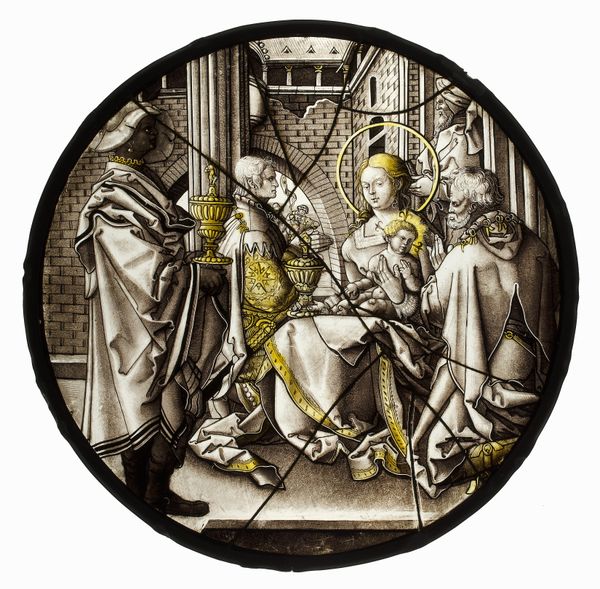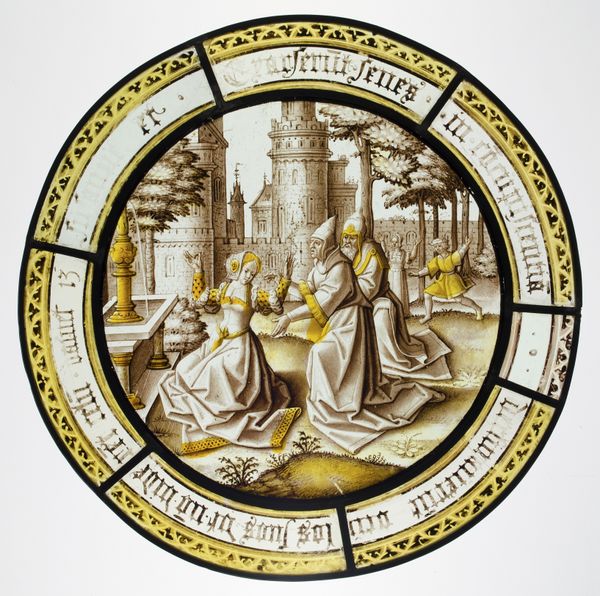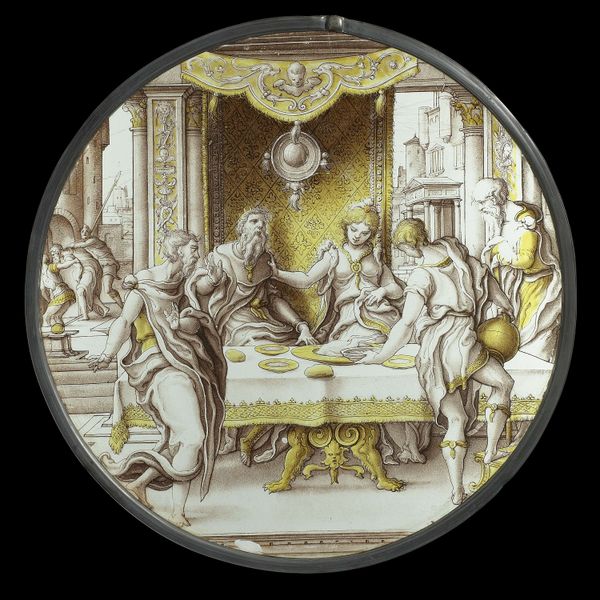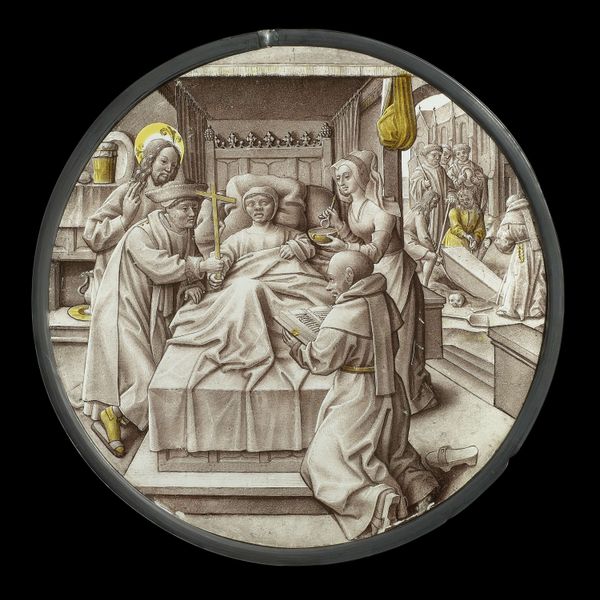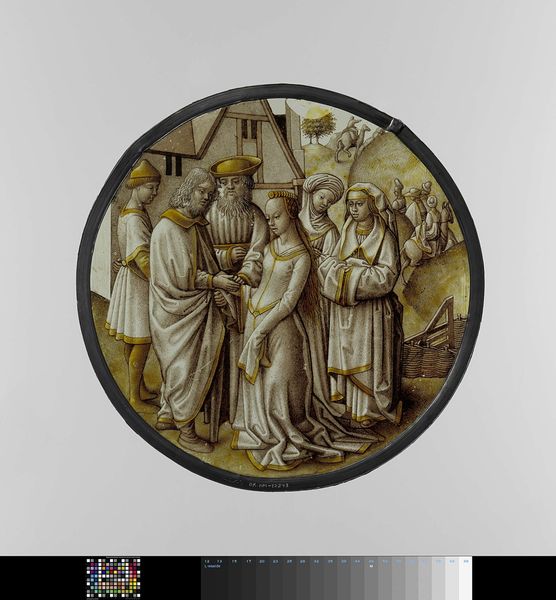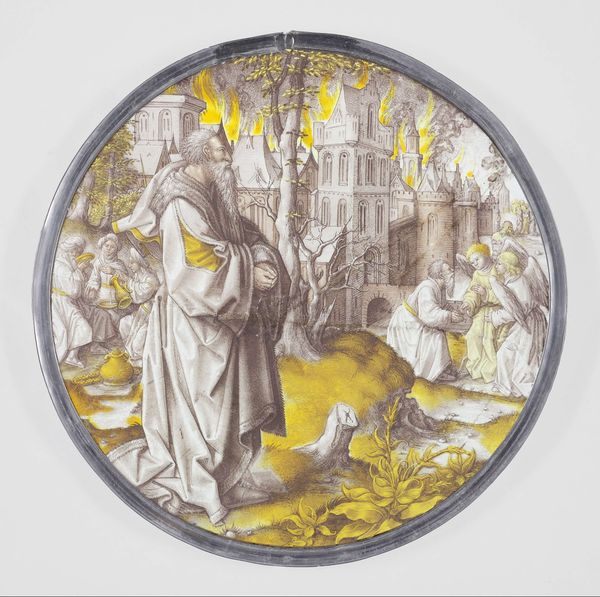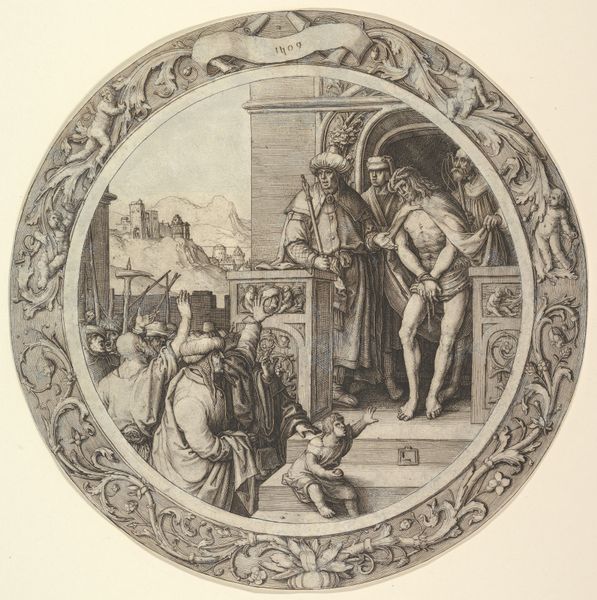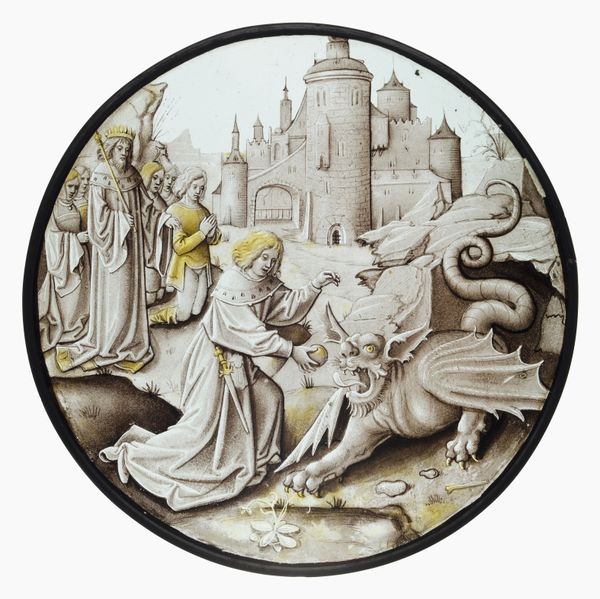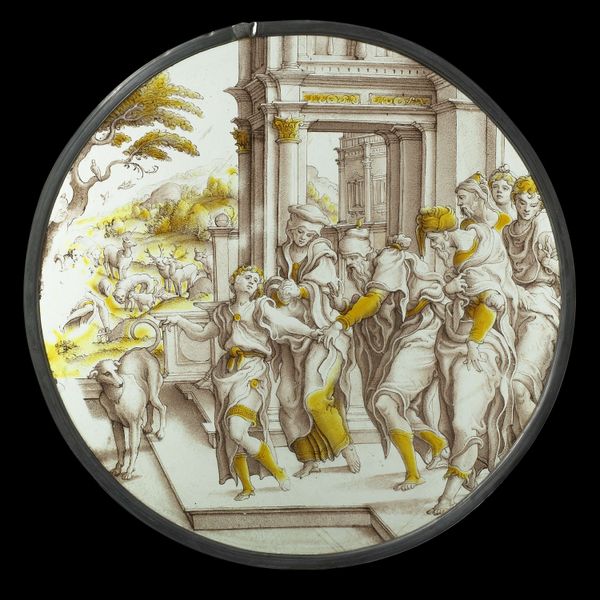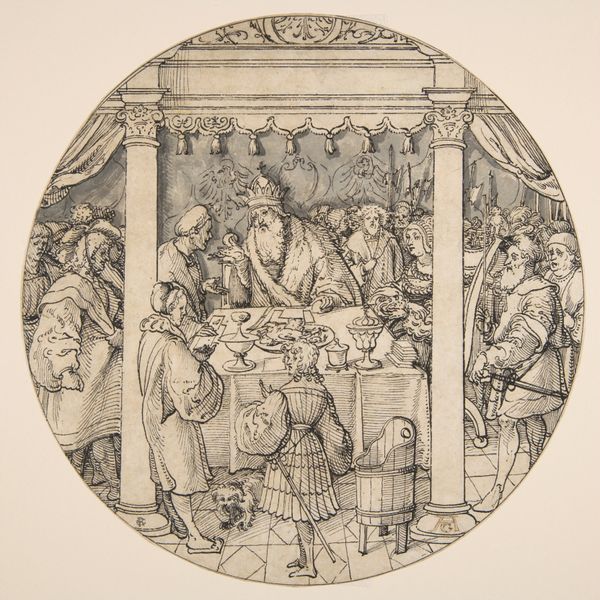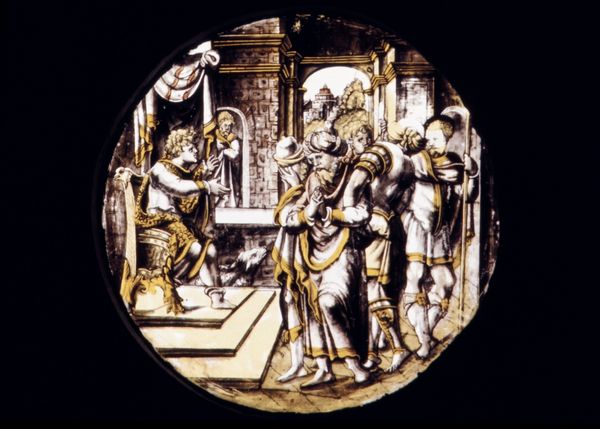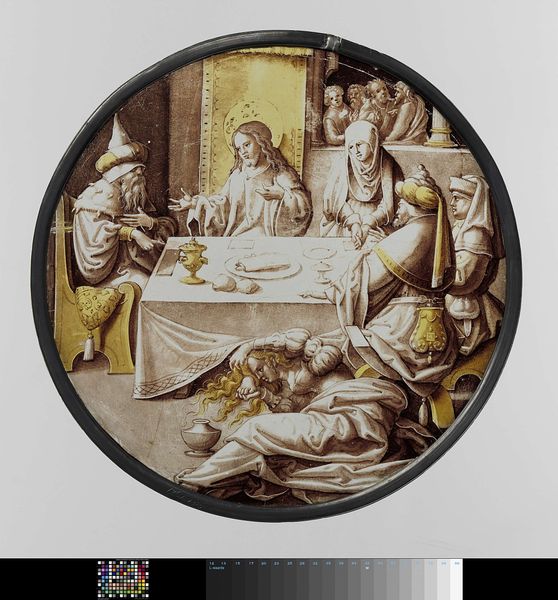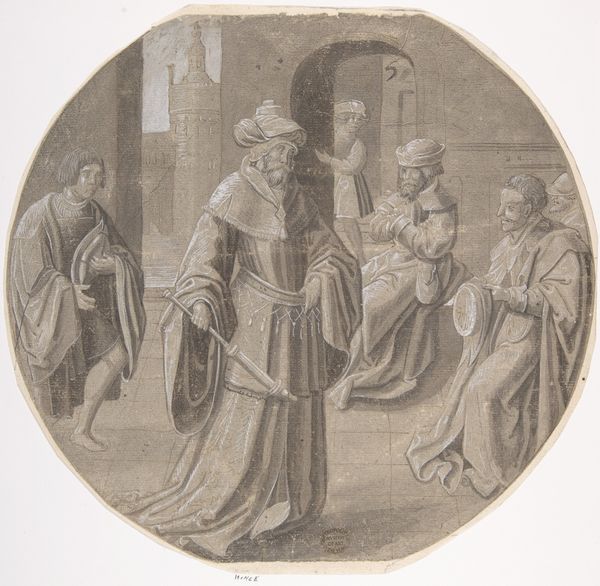
glass
#
caricature
#
strong focal point
#
figuration
#
glass
#
men
#
history-painting
#
portrait art
#
christ
Dimensions: Overall: 8 3/4 in. (22.2 cm)
Copyright: Public Domain
Editor: So, this is a stained-glass roundel depicting Christ and the Adulterous Woman, made around 1525. The artist is unknown, but it’s attributed to Pseudo-Ortkens. There's a striking sense of drama, a real tension in the scene. What kind of story does it tell you? Curator: Well, seeing this, I’m immediately struck by how it uses a biblical narrative – a woman accused and publicly shamed – to perhaps comment on the hypocrisies of power in 16th-century society. Consider the composition: a lone woman is kneeling and Christ facing her; behind Christ, men clad in similar garments form an almost voyeuristic unity as if society is breathing down her neck. Given that it's stained glass, does the medium of public display complicate the picture further? Editor: It’s interesting you mention the potential comment on the hypocrisies of power and also that this was for public consumption, it forces the viewer to think about society’s gaze at women. What does the original biblical story contribute, then? Curator: Right, the narrative is key! We know from the gospels that Jesus challenged the accusers, stating "He that is without sin among you, let him first cast a stone at her.” By reminding viewers of the Christian ideals of forgiveness and justice, the work cleverly holds a mirror up to the audience itself. How does its existence as art that can decorate spaces for religious experiences change this meaning? Does its potential aesthetic pleasure take away or add to the art? Editor: I see. It uses both biblical precedent and medium to force its viewers to contemplate social and spiritual concerns regarding those with institutional power, mainly directed towards vulnerable groups of women. The composition clearly centers the actions of men as Christ asks them about sin and power and the woman as the subject of judgement and potentially compassion. So, would you say that a feminist lens significantly shifts our understanding of the artwork? Curator: Absolutely. Thinking about its historical context alongside contemporary theory really unveils how artworks, even those seemingly straightforward, speak volumes about power, judgment, and, ultimately, collective responsibility. Editor: Thanks so much! It gives me a whole new perspective. Curator: My pleasure! Thinking critically about who gets to tell these stories—and how—is always time well spent.
Comments
No comments
Be the first to comment and join the conversation on the ultimate creative platform.
